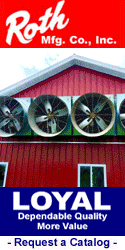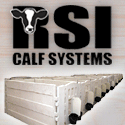 |
 |

|
|
|
New York Ag News Headlines |
 |
Innovative Program Promotes Rotational Grazing in Bay Area
By: Ciji Taylor, Natural Resources Conservation Service - 01/07/2016
"Who better to share the benefits of intensive rotational grazing than farmers who are actually doing it on their lands?" asked Beth L. McGee, Chesapeake Bay Foundation Senior Regional Water Quality Scientist.
Intensive grazing systems, a type of rotational grazing that uses higher per acre stocking rates in smaller grazing or pasture units, can provide multiple benefits for farmers and the environment. These systems can help maintain and enhance farm profitability while
reducing labor and input costs. Compared to more traditional confinement operations, intensive grazing can result in improved soil health, an increase in sequestered carbon and decreased emissions of other greenhouse gases.
Yet, despite these benefits, adoption of intensive grazing systems is relatively low among producers in the Chesapeake Bay region. Farmers often cite the challenges of learning new techniques and the start-up expenses associated with switching from more
traditional pasture systems as obstacles to switching to intensive grazing systems.
To promote greater adoption of intensive rotational grazing in the Bay watershed, the Natural Resources Conservation Service recently awarded a $491,000 Conservation Innovation Grant to the Chesapeake Bay Foundation. Partner groups including the
Virginia Forage and Grassland Council and the University of Maryland will match the amount, bringing the total project investment to nearly $1 million.
The funding will be used to expand outreach and technical assistance for farmers who graze livestock in Maryland, Virginia, and Pennsylvania and provide opportunities for current and new grazing farmers to share information on intensive grazing systems.
A key element of the program is farmer-to-farmer mentoring.
The program's goals are to create a regional network of more than 250 grazers in the three targeted states, enroll an additional 1,400 acres in pasture farming, and to quantify environmental and economic benefits of intensive grazing systems.
"By quantifying and showcasing the benefits of intensive grazing systems, we're confident more farmers will adopt this practice, improving not only their farm, but the surrounding watersheds and Bay area," said McGee.
The program will include activities such as two-day grazing schools and field days, annual state-specific planning calendars for grazers, a regional conference, a quarterly electronic grazing newsletter, and an update of the Amazing Grazing Directory for direct
marketing of grass-fed products.
These resources will give farmers an opportunity to learn grazing techniques, see the practice in action, and share experiences and lessons learned. This regional network can help farmers have healthier livestock, increase profitability and create cleaner
waterways in the Bay area.
The CBF grant was awarded in CIG's Greenhouse Gas markets category. As part of the project, CBF will also develop eight "case study" farms where they will quantify the water quality, greenhouse gas, soil health, and economic benefits of converting to more
intensive grazing systems. They will also explore market-based opportunities for grazers, such as carbon trading programs.
"A lot of the carbon and greenhouse gas markets projects on farms and ranches to date have been located in the West, Midwest or Northern Plains," said NRCS Deputy Chief for Science and Technology Wayne Honeycutt. "We are pleased that CBF is
pioneering greenhouse gas markets work on the East Coast."
Farmers in the Chesapeake Bay watershed are challenged with improving water quality in the Bay and its tributaries as part of the Chesapeake Bay Total Maximum Daily Load established by the U.S. Environmental Protection Agency in December 2010.
"Intensive grazing, in addition to its economic, soil and greenhouse gas benefits, ensures that soil is covered by grass at all times," said Honeycutt. "That helps reduce runoff of nutrients and sediment into local water bodies and eventually, into the Bay."
The innovative NRCS CIG program enables NRCS to work with public and private entities like the Chesapeake Bay Foundation to accelerate technology transfer and adoption of promising innovations to address some of the Nation's most pressing natural
resource concerns.
NRCS is a federal leader in supporting the development of environmental markets, largely through its CIG program. In 2015, approximately half of the CIG funding supported environmental markets projects in three categories: water quality trading, greenhouse
gas markets, and--for the first time--impact investments in working lands conservation. The third category is new to CIG and focuses on projects that develop innovative approaches and partnerships to attract private capital to private lands conservation.
|
 |


|
 |
|
Copyright © 2024 - Farms.com. All Rights Reserved. |
 |
|